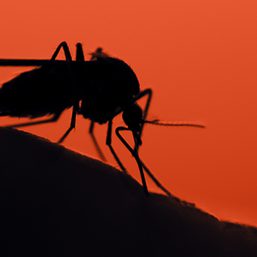SUMMARY
This is AI generated summarization, which may have errors. For context, always refer to the full article.

MANILA, Philippines – The Department of Health (DOH) urged President Ferdinand Marcos Jr. to extend the Philippines’ state of calamity over the COVID-19 pandemic, the agency said on Tuesday, December 27.
In a media briefing on Tuesday, DOH officer-in-charge Maria Rosario Vergeire said the agency made this request while the measure creating a Philippine Center for Disease Prevention and Control (CDC) remains pending in Congress.
Vergeire explained that failing to extend the state of calamity will make the country’s vaccination program, for one, more difficult.
The state of calamity, declared in March 2020 by then-president Rodrigo Duterte when the coronavirus began spreading across the country, has been extended several times by Duterte and Marcos.
The declaration of a state of calamity allows the government to use quick response funds and also to control prices of basic goods. In the case of COVID-19, the state of calamity is also the basis of pandemic response programs such as vaccinations.
“We already submitted our memo for the President requesting the extension of the state of calamity in consideration of the fact that the CDC bill was not enacted on time,” Vergeire said.
The state of calamity is set to expire on December 31 after Marcos’ latest extension on September 12 through Proclamation No. 57.
Vergeire said that the department was awaiting the official response of the President.
Why does this matter?
With the easing of restrictions and social life in the Philippines mostly back to normal, some Filipinos may question the need for an extension of the state of calamity.
Vergeire explained that several elements in the pandemic response would be affected if the state of calamity was lifted while the proposed CDC was not yet in place. “We will be losing the different response strategies that we are doing right now,” she said.
“Our COVID-19 vaccination program is anchored on the state of calamity provision of the law. So if we lose that, we might have difficulties implementing COVID-19 vaccinations. The EUAs we give to vaccines and medicines we use for COVID-19 will also have issues with that,” Vergeire said in a mix of English and Filipino.
“Also, our indemnifications and and immunity from liability [for vaccines], which find legal basis [in the proclamation], we’ll also have trouble with. And aside from that, the emergency hiring and emergency allowance of our healthcare workers would be involved,” she added.
The CDC bill’s explanatory note says the CDC, which would become an attached agency of the DOH, is designed to better prepare the country against public health emergencies by absorbing DOH units related to communicable diseases and “modernizing” the health system.
The House of Representatives approved the CDC bill on third and final reading on December 12.
Holiday surge?
While the 2022 holidays have had the most eased restrictions since the pandemic began, the DOH is optimistic that any increase in COVID-19 cases from social gatherings will not be as drastic as before due to current vaccination rates.
Filipinos have been “very cautious” in Christmas gatherings, Vergeire said. Filipinos continue to wear masks, even if optional, inside crowded malls and churches for Simbang Gabi, the DOH observed.
“As to the effect of these Christmas holidays, reunions, and parties, we will know after 14 days if there will be an increase in cases. But one thing that I can tell all of you would be, if ever cases do increase, I think it’s not going to be the same as what we’ve had before. Because now, we are better equipped,” said Vergeire.
Just after the 2021 holidays, the Philippines experienced its worst surge with tens of thousands of new COVID-19 cases driven by the Omicron variant in January 2022.
Just around half of the Philippines’ population aged 12 and above were fully vaccinated around this time. As of Monday, December 26, 73.76 million Filipinos have complete vaccinations, which is around 66.45% of the 111 million Filipinos.
Just 21.1 million Filipinos, however, have received their first booster shots.
The country also detected its first four BF.7 subvariant cases on December 23. This is the subvariant causing a fresh surge in China.
The DOH said “it’s not supposed to be a concern, but it’s something that we should be cautious about,” as the Philippines has already been learning to live with the virus. – Rappler.com
Add a comment
How does this make you feel?





There are no comments yet. Add your comment to start the conversation.